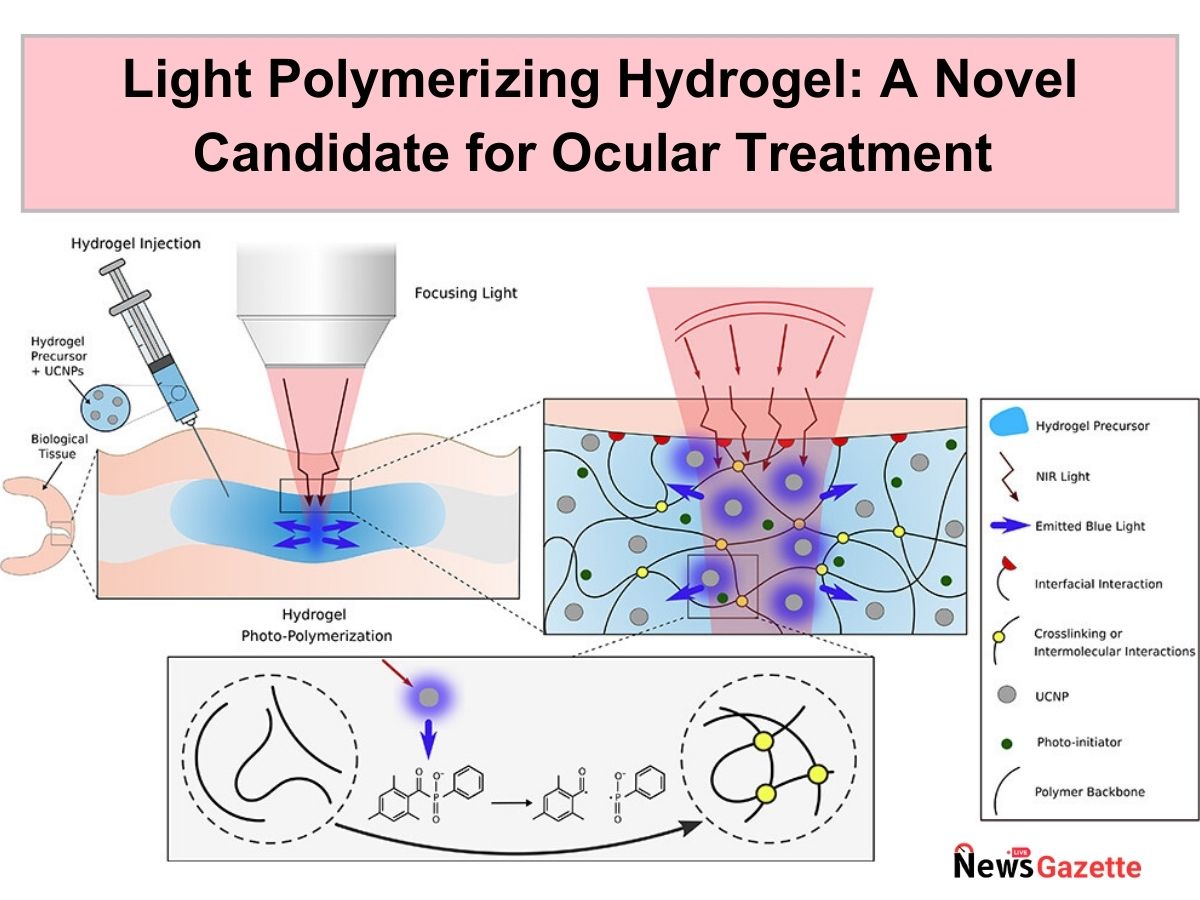
Light Polymerizing Hydrogel: A Novel Candidate for Ocular Treatment
A growing prevalence of ocular impairments is imminent in an era that uses bright screens to light one’s future. 2.9 million Americans are suffering from low vision, while 1.3 million are said to be completely blind. By 2030, these figures are estimated to reach 5 million and 2.2 million, respectively. From premature sight retardation to occupational blindness, the bleakness of the future is overwhelming. Defying the conventional treatment methods, the light-activating hydrogel gives a glimmer of hope to the afflicted population.
Traditional practices dictate surgical insertion of compatible donor tissue into the defective region of the recipient’s eye or complete corneal transplant in case of significant damage. This procedure is referred to as keratoplasty. According to the Eye Banking Statistical Report-2022, out of the 122,472 tissues recovered from 61,747 donors, 79,126 were distributed for keratoplasty. There is an increasing demand for therapeutic corneal procedures, with the majority of the cases requiring donor tissue. Tissue replacing bio mimics has been widely accepted to fill the gap between the demand and source. Synthetic corneal grafts, allogenic tissues, tenon patches, fibrin glue, etc., are some of the existing alternatives to keratoplasty.
Light-activated hydrogel for corneal thinning
The University of Ottawa developed a light-activated hydrogel to treat diseases associated with corneal thinning. This technology involves injection of glycosaminoglycans into a surgically created pocket. Low-energy blue light discharges are then used to thicken and reshape biomaterial to fit the ocular incision. This hydrogel can be used as a substitute for donor tissue as well as post-transplant support. Preclinical studies on rat models showed that the light-activated hydrogel treatment could thicken corneas with minimal side effects.
Successive ex vivo studies on pig corneas further validated the results of the murine model. Dr. Alarcon, an integral study member, stated in an interview, “We had to engineer each part of the components involved in the technology, from the light source to the molecules used in the study. The technology was developed to be clinically translatable, meaning all components must be designed to be ultimately manufacturable following strict standards for sterility,”. After fine-tuning the blue light intensity and dosage, the researchers are currently in negotiation for patent and licensing rights.
Read Also: Novartis’ Leqvio®: A Potential Tool for Healthy Living
What’s Next?
Another light-sensitive hydrogel currently in trial is a methacryloylated gelatin (GelMA) based formulation crosslinked using collagen type I (Col I). Patches of these polymers have been tested to meet the ‘T.E.S.T.’ requirements: ‘Transparency’ and ‘Epithelium & Stroma generation’, ‘Suturelessness’, and ‘Toughness’. Marketed as a light activating bioadhesive, the GelMA-F127DA&AF127 hydrogel has excellent clinical value for ocular repair and rapid recovery.
The physiology of the organ, innate reflexes, and various other factors pose a challenge for ocular drug delivery. Reflexive tear production, retinal barriers, and the composition of the membranes lead to excessive drug loss and retarded drug diffusion. This is the major limitation of existing administrative routes. Optical similarities to corneal tissue and responsiveness to selective wavelengths of light make these biomaterials a promising candidate for drug delivery. Irradiation of photosensitive material enables remote drug release by minimally invasive procedures. This also allows the physician to control the dosage or administer multiple dosages in a single administration.
In conclusion, light-sensitive hydrogel presents a promising avenue for the overwhelming demand for ocular treatment. From donor tissue replacement suture less implantations to complete organ substitutes, various formulations of hydrogels have been implemented, contributing to safer and faster treatment options. As science continues to advance, this technology may prove crucial for the future of ocular care.

Lauren Sargent is a seasoned professional in the field of business, finance media and chemical & materials, boasting more than two decades of experience in the digital arena. She has more than 10 years in B2B journalism. Her primary areas of expertise include business strategy development, operational management, product launches, fostering high-quality journalism, and adeptly leading teams to excellence. In Her role, he assumes responsibility for every facet of content oversight at the News Gazzete.
